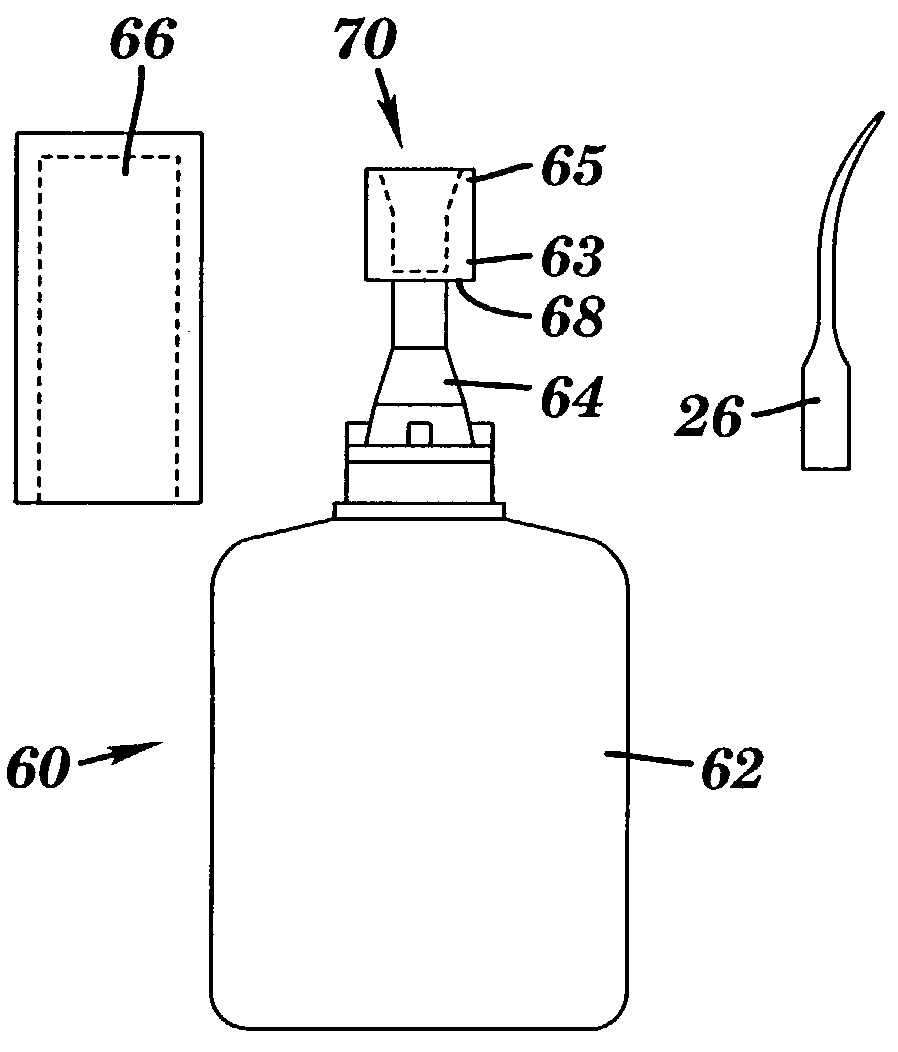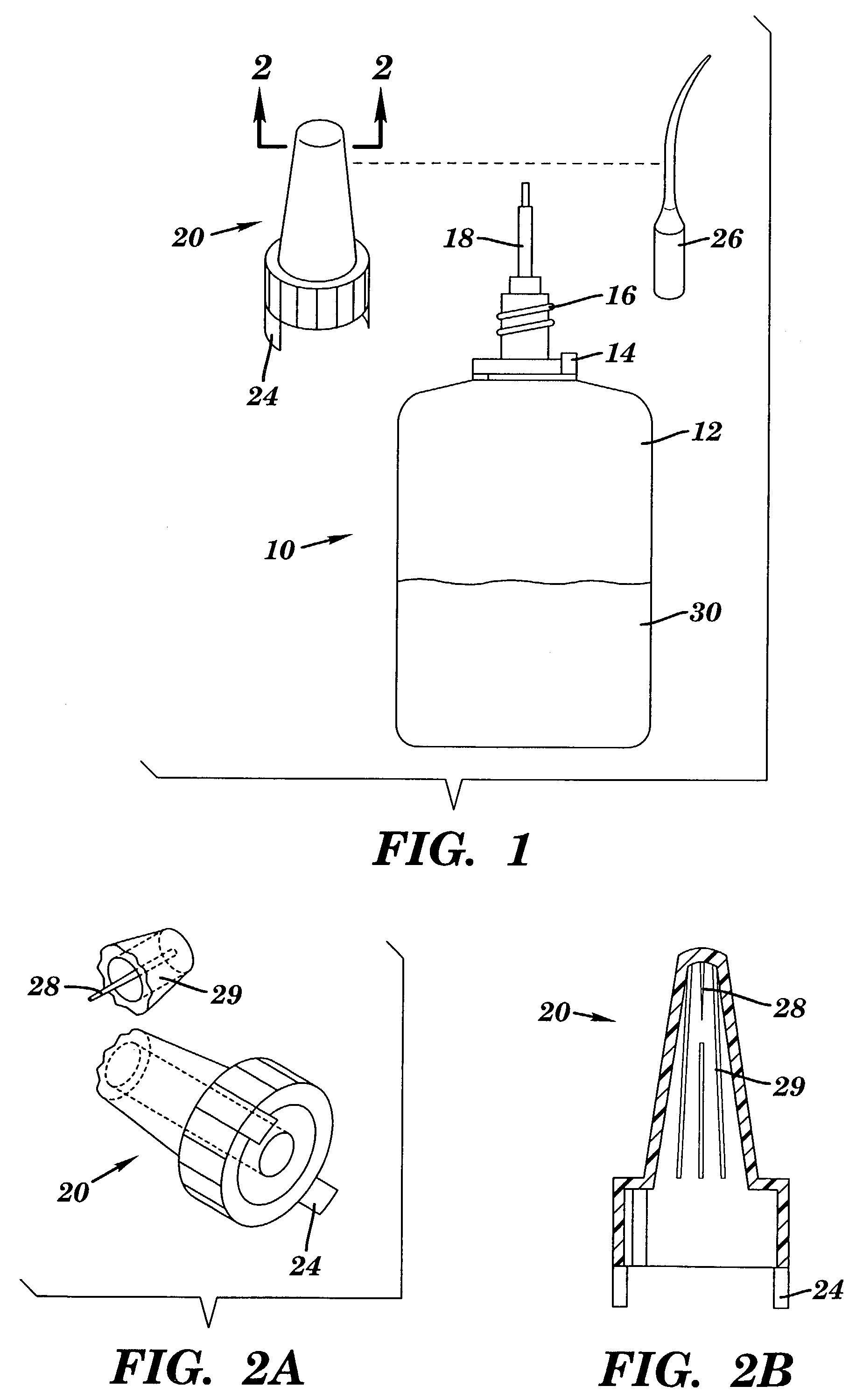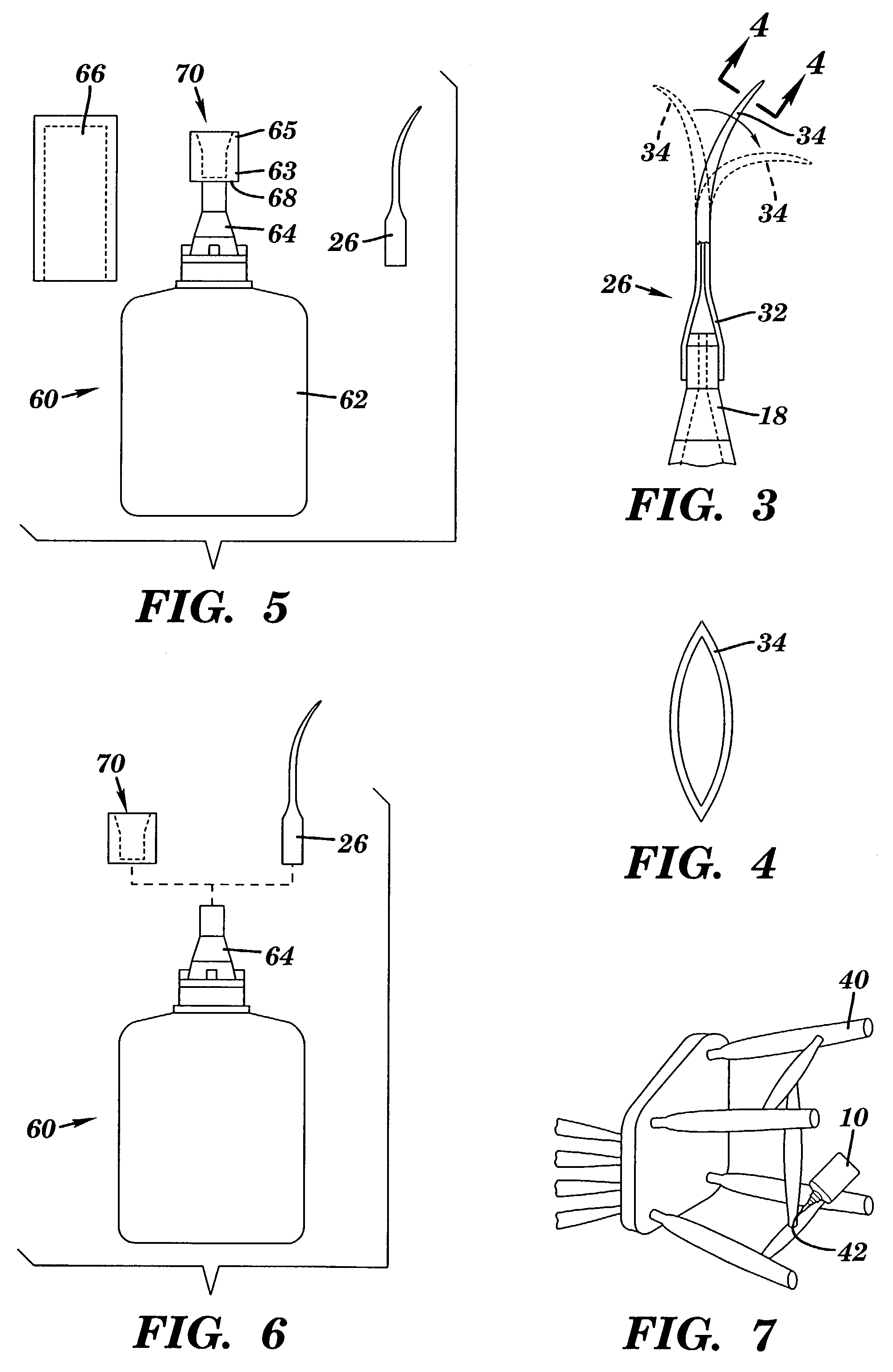Method and apparatus for applying low viscosity cyanoacrylate adhesive on wooden furniture
a cyanoacrylate, low viscosity technology, applied in the direction of adhesive types, chemistry apparatus and processes, manufacturing tools, etc., can solve the problems of not allowing for easy repair of loosened joints, not allowing for great flexibility, easy loosening and squeaking, etc., to achieve easy and quick operation, low viscosity, and easy penetration
- Summary
- Abstract
- Description
- Claims
- Application Information
AI Technical Summary
Benefits of technology
Problems solved by technology
Method used
Image
Examples
Embodiment Construction
[0036]Referring now specifically to the drawings, there is illustrated an adhesive dispenser and applicator tip, generally designated as 10, in accordance with a preferred embodiment of the present invention, wherein like reference numerals refer to like components throughout the drawings.
[0037]An adhesive dispenser 10 is made up of a body 12 and tiered discharge member 18 with an axial opening therethrough. The discharge member comprises peripheral annular protruding ribs 14 and screw abutments 16, shown in FIG. 1. A closure member 20 is provided for the tiered discharge member 18 which locks into place thereon when opposing tabs 24 on the lower portion of the closure member couple with the peripheral annular protruding ribs 14, preventing discharge when the same is being stored. An applicator tip 26, extending from the discharge member a limited distance, is also provided for dispensing the adhesive located in the body 12 of the dispenser 10. The applicator tip and closure member ...
PUM
| Property | Measurement | Unit |
|---|---|---|
| Pressure | aaaaa | aaaaa |
| Angle | aaaaa | aaaaa |
| Temperature | aaaaa | aaaaa |
Abstract
Description
Claims
Application Information
 Login to View More
Login to View More - R&D
- Intellectual Property
- Life Sciences
- Materials
- Tech Scout
- Unparalleled Data Quality
- Higher Quality Content
- 60% Fewer Hallucinations
Browse by: Latest US Patents, China's latest patents, Technical Efficacy Thesaurus, Application Domain, Technology Topic, Popular Technical Reports.
© 2025 PatSnap. All rights reserved.Legal|Privacy policy|Modern Slavery Act Transparency Statement|Sitemap|About US| Contact US: help@patsnap.com



